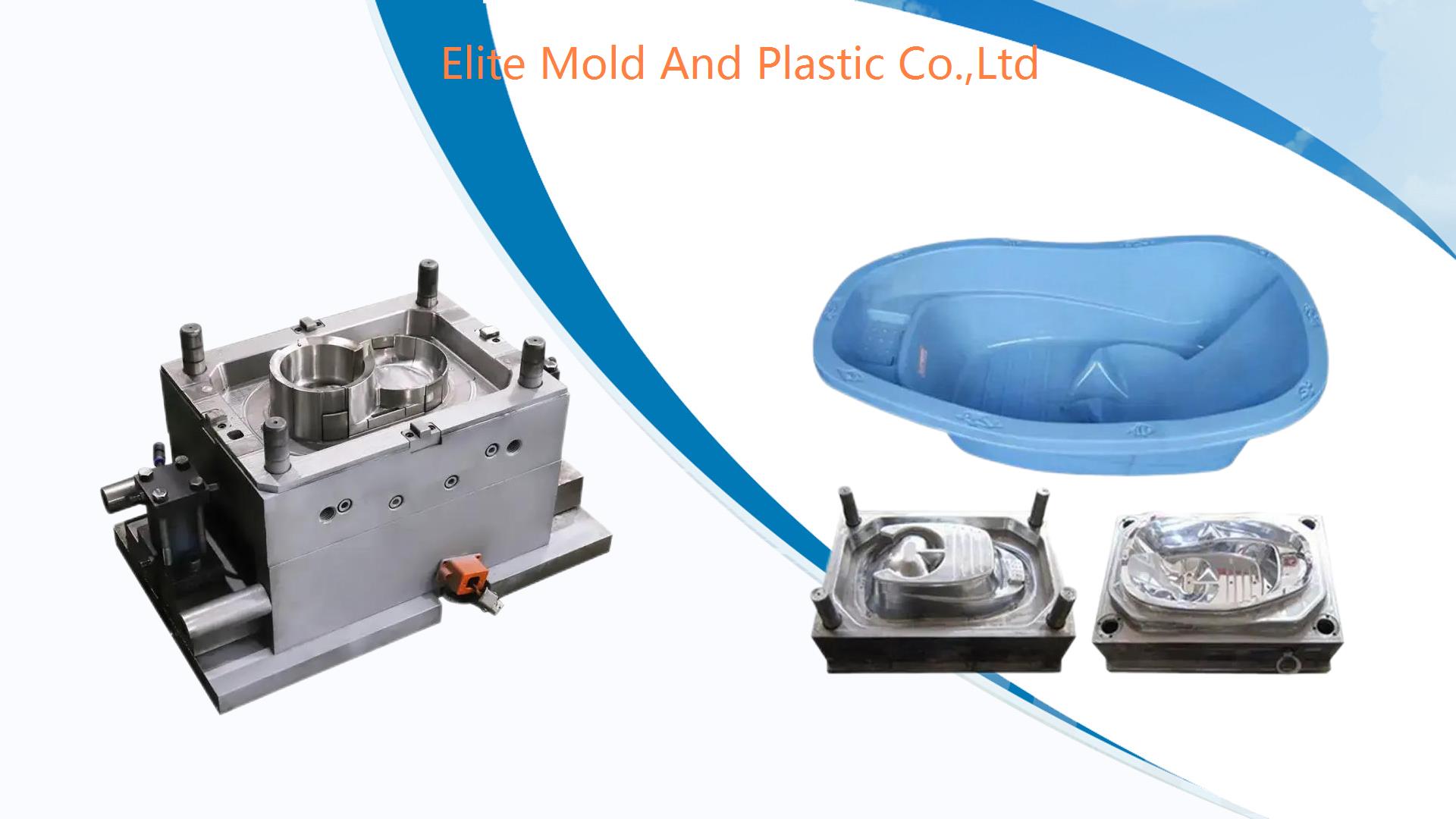A Step by Step Overview of the Plastic Mold Production Process in Injection Molding
At Elite, a trusted plastic injection mold manufacturer in China, we specialize in delivering high-quality molds and plastic molded parts at competitive prices. With years of experience in the injection molding industry, we understand the importance of precision and efficiency in the mold production process. In this article, we will provide a step-by-step overview of the plastic mold production process in injection molding, giving you a detailed understanding of how we bring your custom parts to life.
What is Plastic Mold Production?
Plastic mold production is the process of designing and manufacturing a custom mold that is used in injection molding to create plastic parts. The mold acts as a precise tool that shapes molten plastic into the desired form. The success of the entire injection molding process hinges on the accuracy and quality of the mold.
Step-by-Step Overview of the Mold Production Process
1. Initial Consultation and Design Requirements
Understanding the Client’s Needs
The first step in the mold production process is understanding the client’s specific requirements for the part. This includes discussing the part’s functionality, material requirements, production volume, and any special considerations like aesthetic or mechanical properties.
At Elite, we work closely with clients during the consultation phase to ensure that all design requirements are clearly understood, allowing us to create a mold that meets the project’s needs.
2. Part Design and Material Selection
Designing the Plastic Part
Once the design requirements are established, our team of engineers develops a 3D model of the plastic part using advanced CAD (Computer-Aided Design) software. The part design includes precise dimensions, wall thickness, and any critical features such as undercuts, ribs, or threads.
Selecting the Right Material
Material selection is crucial for ensuring that the part meets the desired mechanical, thermal, and chemical properties. At Elite, we help our clients choose from a wide range of thermoplastics, including:
- ABS (Acrylonitrile Butadiene Styrene) for impact resistance
- PP (Polypropylene) for lightweight and chemical resistance
- Nylon (Polyamide) for high-strength applications
3. Mold Design
Creating the Mold Layout
With the part design finalized, the next step is designing the mold. The mold design includes:
- Cavity and core layout: The cavity forms the exterior of the part, while the core shapes the interior.
- Gate and runner system: These components control the flow of molten plastic into the mold.
- Cooling system: Cooling channels are integrated to ensure even cooling, preventing defects like warping or shrinkage.
- Ejection system: This system ejects the finished part from the mold once it has cooled and solidified.
Our engineers at Elite use mold flow analysis software to simulate how the plastic will flow through the mold, ensuring optimal gate placement, balanced flow, and minimal risk of defects.

4. Mold Fabrication
CNC Machining and EDM (Electrical Discharge Machining)
Once the mold design is complete, the fabrication process begins. We use advanced machining technologies to manufacture the mold components with high precision. The most common methods include:
- CNC Machining: Computer-controlled machines cut and shape the mold components with exceptional accuracy, allowing us to achieve tight tolerances.
- EDM (Electrical Discharge Machining): EDM is used to create complex features such as sharp corners, deep cavities, or intricate patterns that are difficult to achieve with traditional machining.
At Elite, we ensure that every mold component is crafted with precision to meet the exact specifications outlined in the design phase.
Mold Assembly
Once the individual components are machined, they are assembled to form the complete mold. The cavity, core, gate, runner, and ejection systems are all fitted together with precision to ensure proper alignment and functionality.
5. Mold Testing and Trial Runs
Testing the Mold
Before full-scale production begins, it is essential to test the mold to ensure that it functions as intended. This phase involves conducting trial runs to identify any potential issues in the molding process, such as:
- Uneven material flow leading to short shots or incomplete filling
- Defects like warping, flash, or sink marks
- Part ejection issues due to poor alignment or cooling
At Elite, we perform rigorous testing to ensure that the mold produces high-quality parts with consistent results.
Fine-Tuning and Adjustments
If any issues are identified during testing, we make the necessary adjustments to the mold. This may involve modifying the gate placement, altering the cooling system, or adjusting the ejection mechanism. Our goal is to fine-tune the mold until it meets the client’s exact specifications.
6. Production and Quality Control
Full-Scale Production
Once the mold has been validated through testing and adjustments, it is ready for full-scale production. The mold is mounted onto the injection molding machine, and molten plastic is injected into the mold cavity to produce the final parts.
At Elite, we ensure that every part produced meets the highest standards of quality and precision. Our experienced technicians monitor the injection molding process to ensure optimal performance and efficiency.
Quality Control and Inspection
Throughout the production process, we conduct regular quality control inspections to ensure that every part meets the client’s specifications. This includes:
- Dimensional accuracy checks using precision measurement tools
- Surface finish inspections to ensure aesthetic quality
- Mechanical testing to verify strength, flexibility, or other critical properties
By adhering to strict quality control protocols, we guarantee that every plastic part we produce is of the highest quality.
7. Mold Maintenance and Longevity
Regular Maintenance
To extend the life of the mold and maintain part quality, regular maintenance is essential. This includes cleaning, lubricating, and inspecting the mold for wear or damage.
At Elite, we offer comprehensive mold maintenance services to ensure that your molds remain in top condition, reducing the risk of downtime and prolonging the mold’s lifespan.
Long-Term Use and Durability
High-quality molds can produce thousands or even millions of parts over their lifespan. By investing in precision mold manufacturing and regular maintenance, you can ensure that your molds deliver reliable performance for years to come.
Conclusion
The plastic mold production process in injection molding is a detailed and precise operation that involves multiple stages, from initial consultation and part design to mold fabrication, testing, and full-scale production. As a leading plastic injection mold manufacturer, Elite is committed to delivering molds that meet the highest standards of precision, durability, and quality.
With years of experience, state-of-the-art technology, and a team of skilled professionals, we offer customized mold production solutions to suit your project’s unique needs. Contact Elite today to learn more about our services and how we can support your next plastic injection molding project.
Related news
Our Certificates
By co-operating with Elite Mold, you have selected one of the most reliable ISO 9001 certified plastic mold manufacturer, Elite Mold as a plastic injection mold manufacturer specializing in plastic injection mold and supplying plastic injection molding services for plastic mold design, prototype makings, mold flow analysis, precise machining, OEM services, ODM services and so on, building custom plastic injection molding. We are committed to enhance the Process optimized and quality of service, shorten lead time and assist in lowering inventory, by providing new products every year to bring in continuous and higher profits for our clients. The ability to produce mold at the International standard, strong engineering and mold design capability, aggressive delivery, competitive pricing and business integrity continues to be the success factor of Elite Mold.










